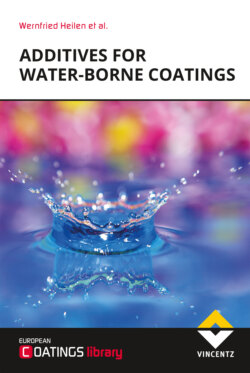Читать книгу Additives for Waterborne Coatings - et al. - Страница 19
На сайте Литреса книга снята с продажи.
2.2Chemical structures
ОглавлениеTo stabilise pigment particles two different molecule segments are necessary: anchor groups with an affinity for the pigment, which adsorb on the pigment surface, and water-soluble side chains which produce the steric hindrance. Because the groups with affinity for the pigment are mostly hydrophobic and the soluble side chains hydrophilic, wetting and dispersing additives are called amphiphilic structures. The simplest amphiphilic structure is a surfactant. On account of their low molecular weight, surfactants are not suitable for stabilising pigment particles.
Commercially available products are mostly polymeric. The polymers can contain various functional groups with high pigment affinity (anchor groups). An aromatic ring forms a suitable anchor group for organic pigments with the adsorption being caused by van-der-Waals forces. Adsorption on inorganic, oxidic pigment particles involves hydrogen bonding and induced dipoles; hydroxyl or carbonyl groups are suitable here. Additives containing both of these groups in the form of the carboxyl group, also show a strong affinity to inorganic pigments. Additives with nitrogen-containing groups (e.g. amines or imines) exhibit good adsorption on carbon black surfaces. Additives without nitrogen groups are of only limited suitability for carbon black pigments. In contrast to solvent-borne formulations, the use of primary amine groups as anchor groups for organic pigments and carbon blacks is very limited in water-borne formulations. Primary amine groups would create a cationic additive of limited binder compatibility.
